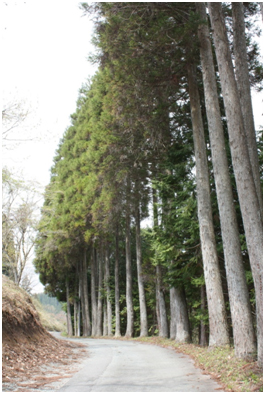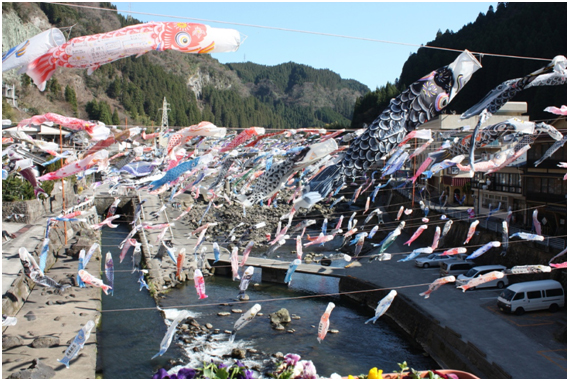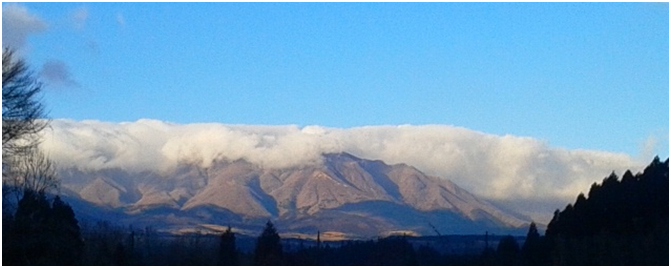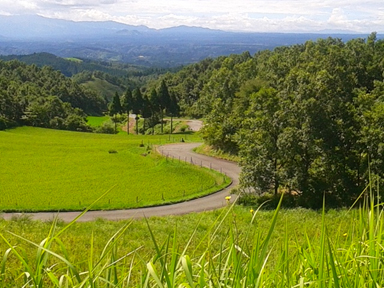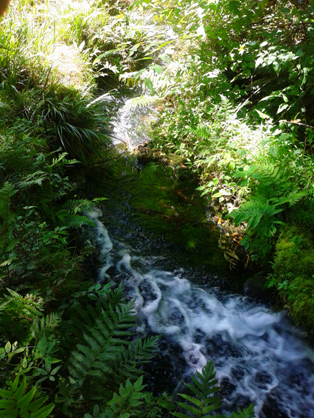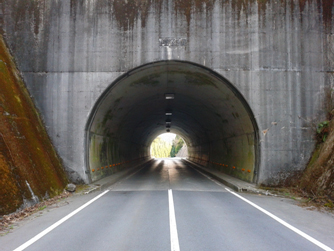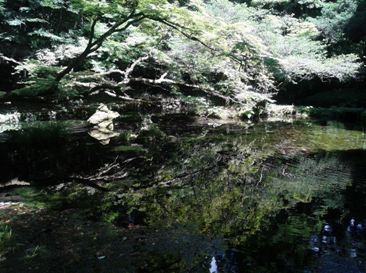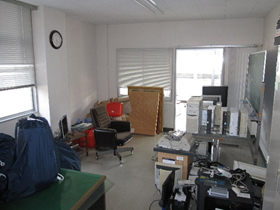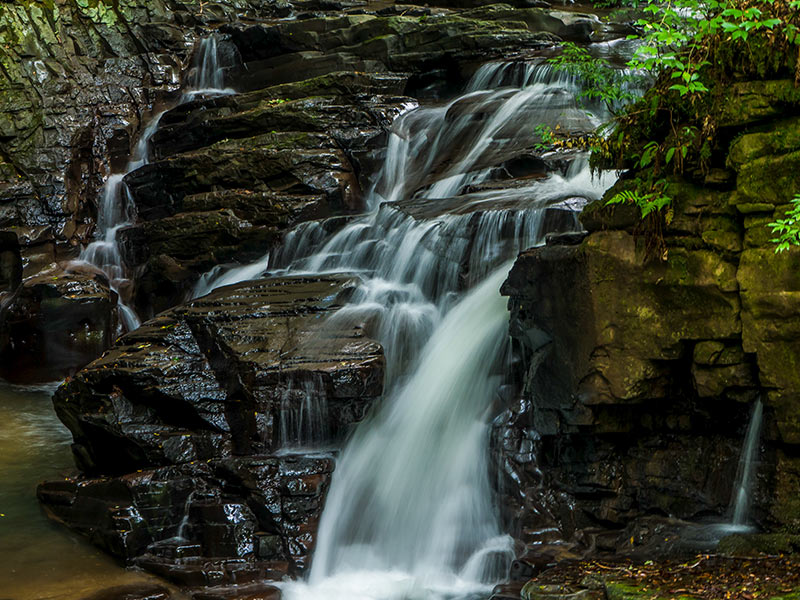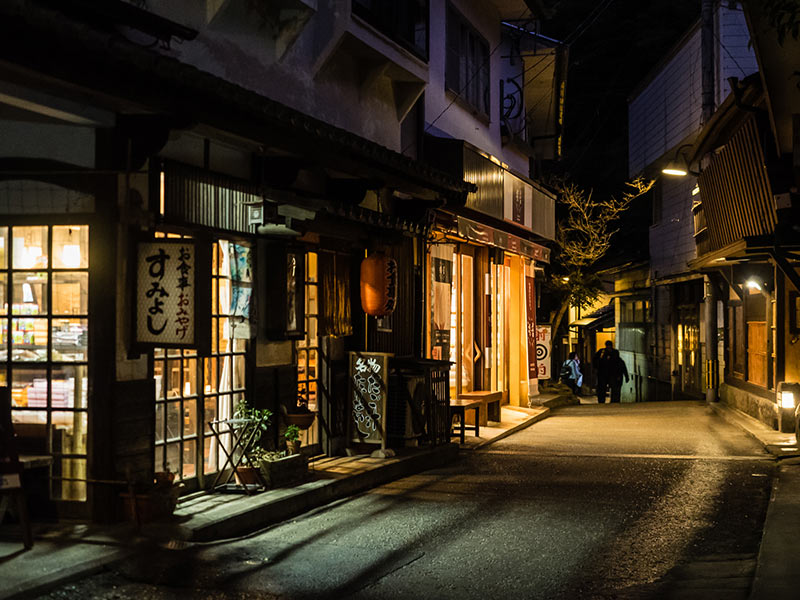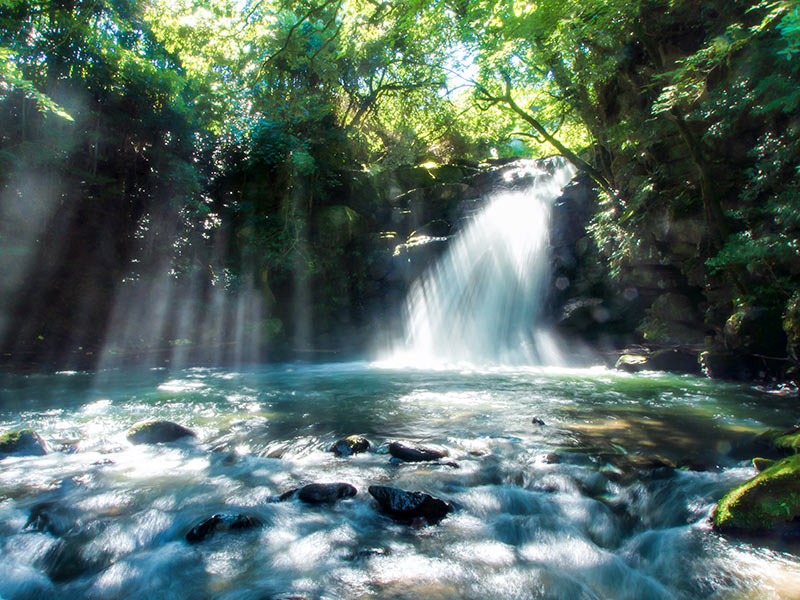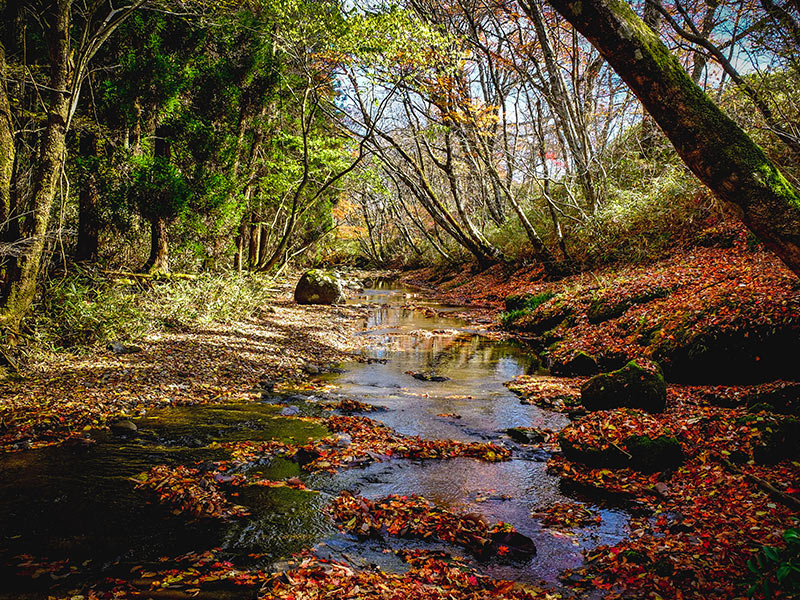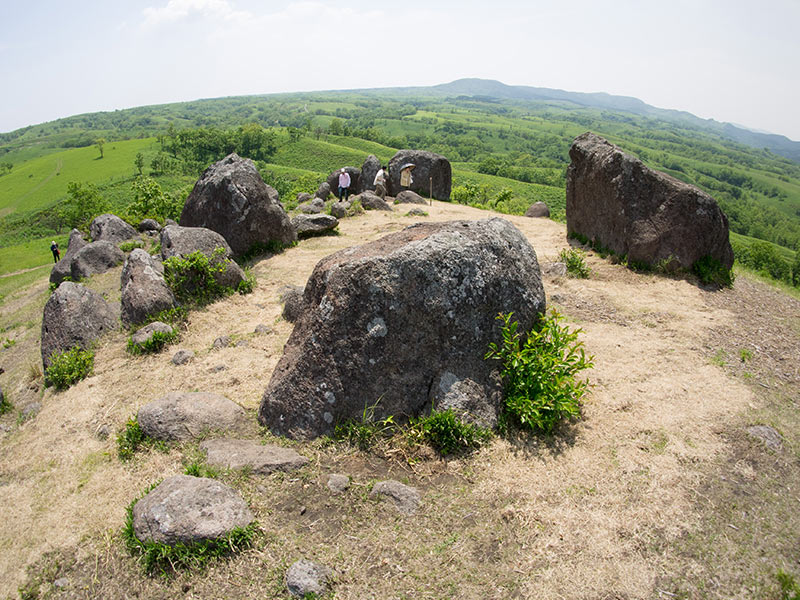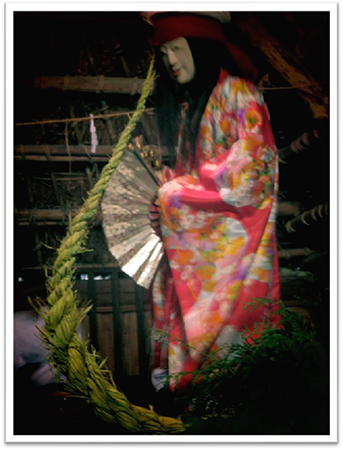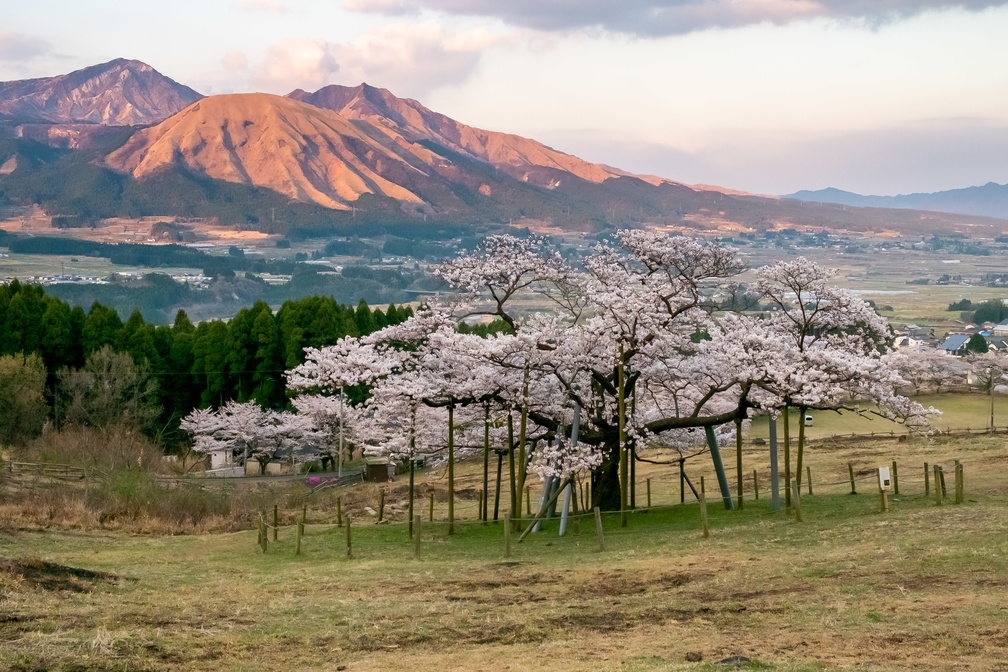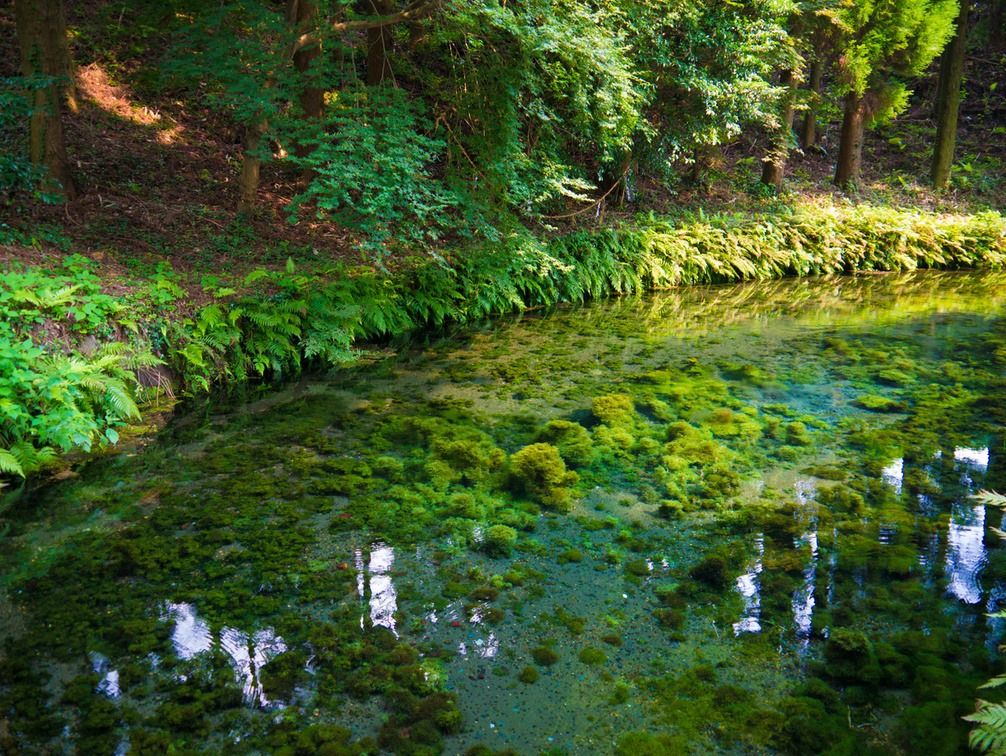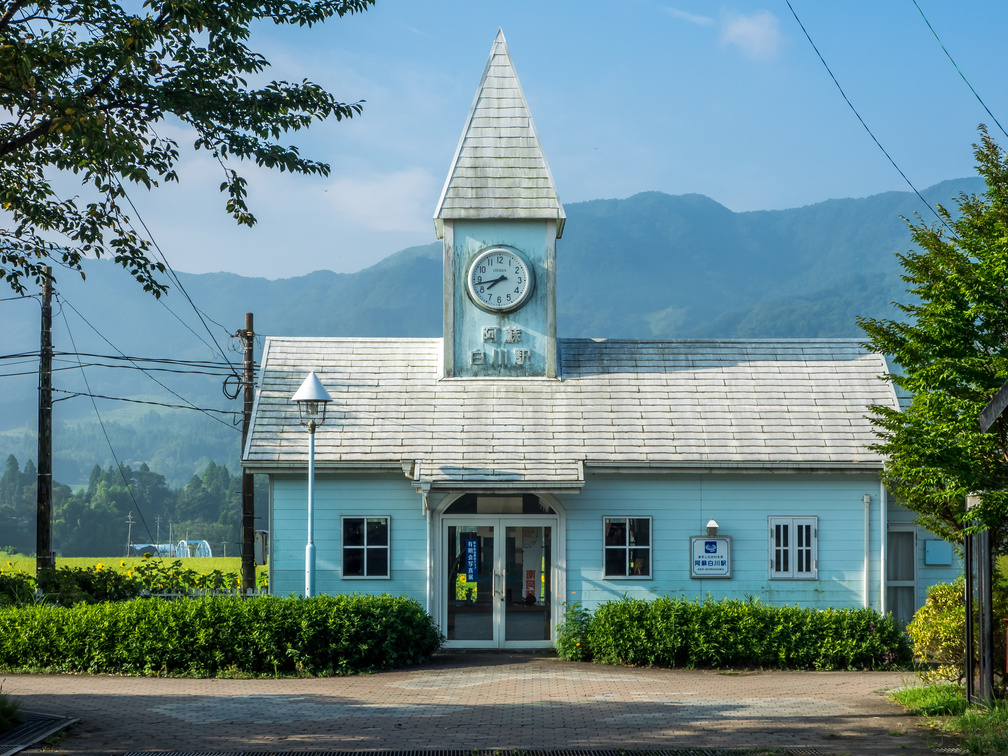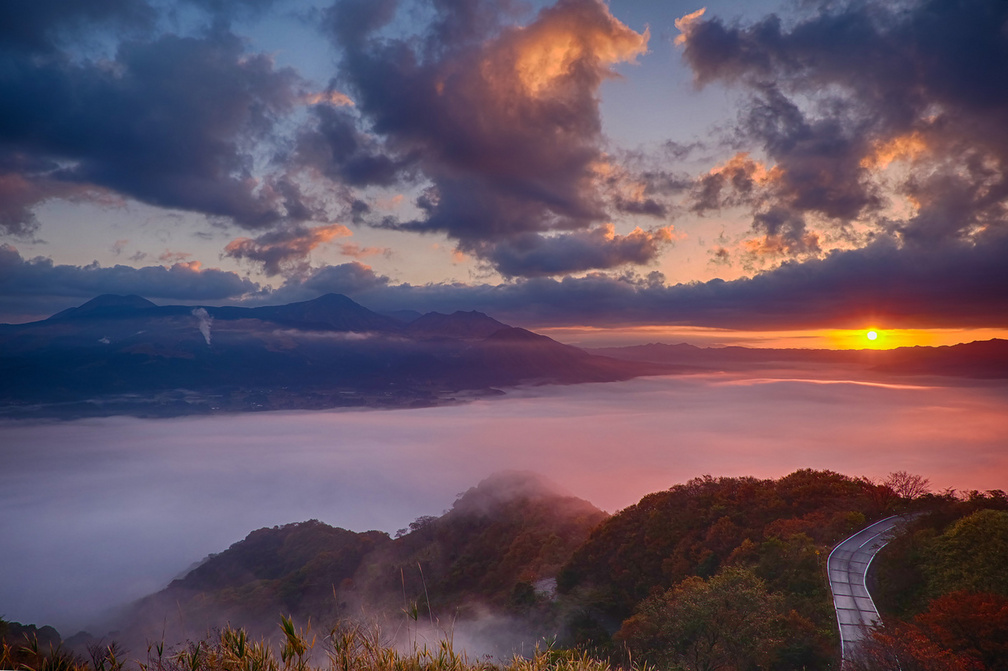Takamori
Takamori is a small town of just over 7000 people located on the easternmost edge of Kumamoto Prefecture (about an hour and a half’s drive from Kumamoto City). It is nestled on the southern side of the Mt. Aso Caldera, one of the world’s largest calderas (a ring of mountains created when a volcano collapses), and boasts beautiful views of Nekodake, one of the five peaks of Mt Aso (the others being Takadake, Nakadake, Kishimadake and Eboshidake). Imagine having this view from your bedroom window when you wake up on a crisp winter’s morning. On a clear day, you can see as far as the smoking mountain peak of Nakadake, the active sulphurous crater. Sometimes a ring of mist rises up slowly from the valley to create an unkai ("sea of clouds" 雲海), where the valley appears to be filled with clouds and only the peaks of Aso are visible above the clouds when viewed from above.
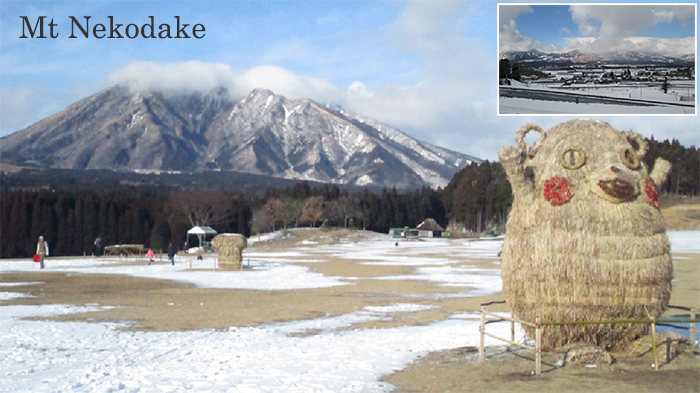
Takamori borders both Miyazaki and Oita Prefectures, so only an hour and a half’s drive to the southeast will get you to some amazing surfing beaches, and the same to the northeast will take you to the relaxing natural onsen hot springs of Beppu. Takamori itself also boasts some great onsen in town, like Tsukimawari Onsen (月廻り温泉), where you can lean back in a steaming rock bath with a view of Nekodake in its entirety.
https://www.asoart.com/en/component/content/category/18-location.html?Itemid=1145#sigProIdcaebb6af92
Cherry blossom trees dot hills surrounding the town, but the most popular spot for hanami (flower viewing parties where you can drink sake and eat under the falling petals) in spring is Senbonzakura (千本桜), which translates as "one thousand cherry blossom trees," with a meandering road up a hill lined with hundreds of cherry blossom trees and overlooking the town (as depicted in this evening shot, photograph courtesy of Soh Hisanaga, owner of a chiffon cake café inside Minamiaso Choyo Station).
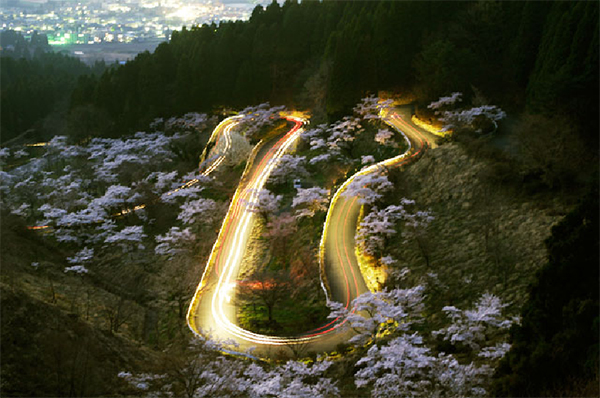
The hills of Takamori are flush with wild edible plants in spring. A local pasttime is digging up baby bamboo shoots for tempura and miso soup. Rice planting and harvesting is a very important agricultural industry in Takamori. The rice paddies come alive with choruses of tiny green frogs and the rice stalks swish pleasantly in the warm breezes as they blow through the valley.
https://www.asoart.com/en/component/content/category/18-location.html?Itemid=1145#sigProId4e0583f99f
Rainy season in June brings hydrangeas, with their many hues of blue, purple and pink. The blooming cosmos flowers in October are a sign of the approaching autumn..
https://www.asoart.com/en/component/content/category/18-location.html?Itemid=1145#sigProId3c756371f4
The pace of life in Takamori is very much entwined with nature and the seasons. A number of festivals depict this and reflect the close-knit nature of the community. Dondoya is one example, where locals come out shortly after New Year's to burn New Year's decorations and welcome in the upcoming year. On August 17th and 18th (timed well for the residence program) is the Fuchinsai, the largest festival of the year. Family, businesses, volunteers and sporting groups make huge floats from recycled goods for a parade through town, and there are also traditional niwaka comedy acts that go door-to-door. Takoyaki (octopus balls), yakitori (chicken kebabs), okonomiyaki (savoury pancakes), yakisoba (fried noodles) and all the other popular festival foods are sold at the stalls lining the pavement downtown.
https://www.asoart.com/en/component/content/category/18-location.html?Itemid=1145#sigProIdf9299f7954
There are a lot of hidden treasures in Takamori—plenty of remote places you can wander to and find a peaceful place to reflect on art and life. Up in the mountains of East Takamori you will find a mysterious work of art: a giant tree house that appears to be deserted but if you keep a close eye on it and monitor it over time, you will notice that it is a piece in progress with new bits of oddly shaped wood added every now and then.
https://www.asoart.com/en/component/content/category/18-location.html?Itemid=1145#sigProIdb7f3173dc2
Another adventure in the magical forests of Takamori is to visit the Takamori Don no Sugi giant cedar tree. This spot is a little off the beaten path and you can find often yourself alone under a canopy of massive trees with only the sounds of nature surrounding you. Cows occasionally clamber down into this nook in the hillside to take refuge from the rain or snow in winter.
https://www.asoart.com/en/component/content/category/18-location.html?Itemid=1145#sigProId010b79cfff
Even Kumamon has made his way up into the mountains of Takamori…
Wildlife is in abundance in Takamori. Monkeys come down from the mountains in groups to steal vegetables from local farmer’s crops, and you may even get a glimpse of shy deer, tanuki (raccoon dog), wild boar or a pheasant.
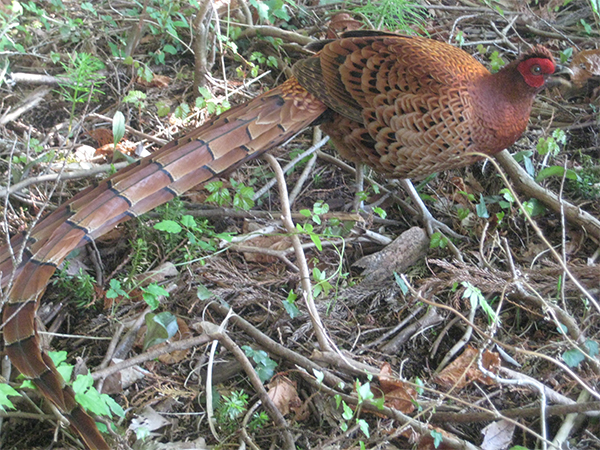
You will find lots of hidden temples. There is a temple called Ganzozenji (含蔵寺) where you can practice zen meditation.
Whenever your stomach starts to rumble, there's a lot to satisfy your hunger in Takamori. Local specialties include dengaku (田楽) which are skewers of mountain potato, konnyaku and tofu smeared with thick black miso paste and roasted on an open fire; a simple but tasty combination. Takamori also has the best roasted jidori chicken in the area. You can find many izakayas and restaurants about town. The centre of town revolves around the local sake brewery called Yamamura Shuzo, which makes the well-loved Reizan brand of sake that is not only famous in Takamori, but all over Kyushu.
https://www.asoart.com/en/component/content/category/18-location.html?Itemid=1145#sigProIde7fa749016
I haven’t even touched on the more touristy spots of Takamori (e.g. Yusui Tunnel, a half-finished-but-abandoned train tunnel with an amazing strobe light water droplet waterfall) but hopefully this has helped you get a feel for what the town atmosphere is like and a picture tells a thousand words. Any artist would love to be immersed in the community here because there are many local artists in woodwork, jewellery, tapestry, photography and painting (on one of the back roads a tiny house has been transferred into a hidden art gallery). There is so much to discover by just walking around town. Or you can head to the Folk School, an old elementary school that was converted into a community and art center, where most of these artists gather on weekends to set up a local market for their work.
https://www.asoart.com/en/component/content/category/18-location.html?Itemid=1145#sigProId8d9caa6d74
Residence
https://www.asoart.com/en/component/content/category/18-location.html?Itemid=1145#sigProId0e1850eea0
Ateller
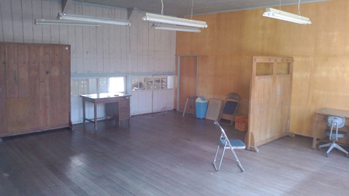


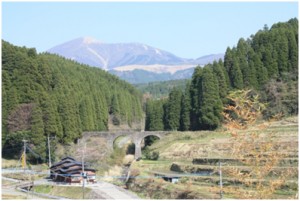 A rural town with a population of slightly under 8,000, Oguni is nestled in the far northeastern corner of Kumamoto Prefecture in the center of Kyushu. Lying just north of the volcanic caldera of Aso, the area is dotted with hot springs and several volcanic rock formations. The distinctive outline of Mount Waita (1499m) dominates the skyline, overlooking a landscape that is hilly, densely forested and interspersed with fast-flowing rivers.
A rural town with a population of slightly under 8,000, Oguni is nestled in the far northeastern corner of Kumamoto Prefecture in the center of Kyushu. Lying just north of the volcanic caldera of Aso, the area is dotted with hot springs and several volcanic rock formations. The distinctive outline of Mount Waita (1499m) dominates the skyline, overlooking a landscape that is hilly, densely forested and interspersed with fast-flowing rivers.